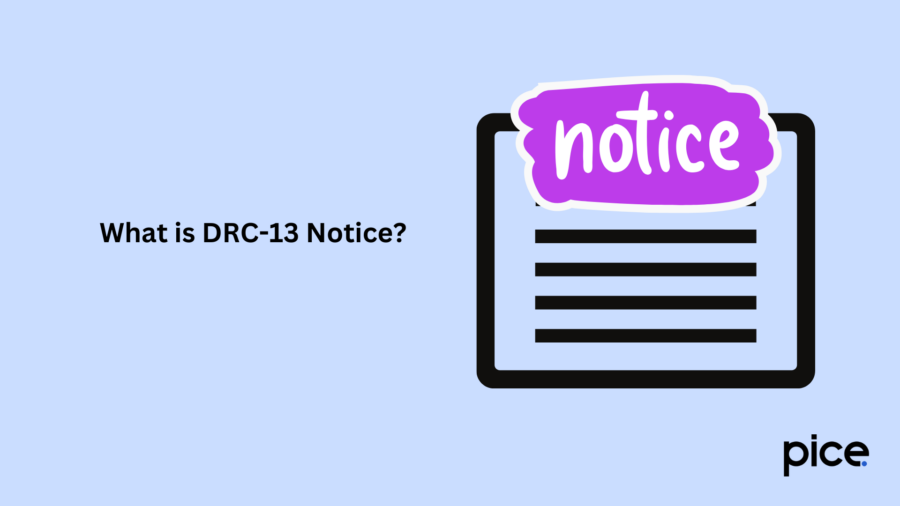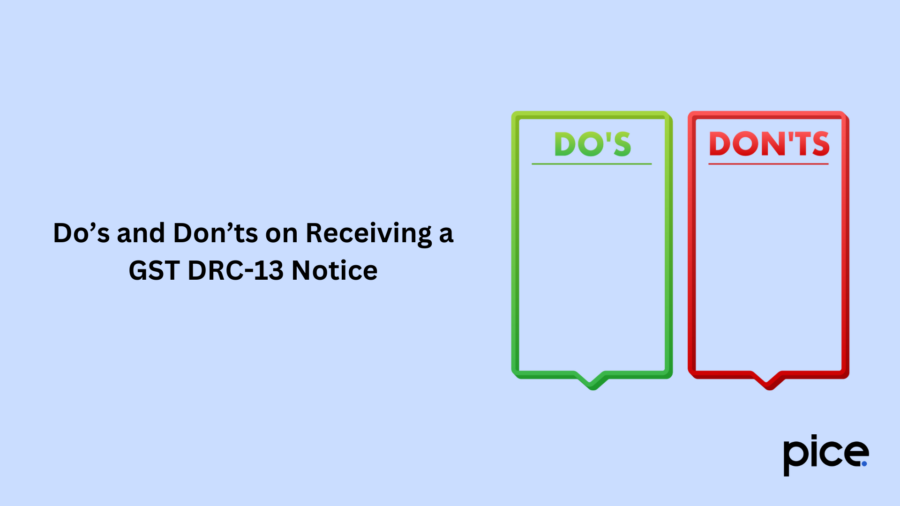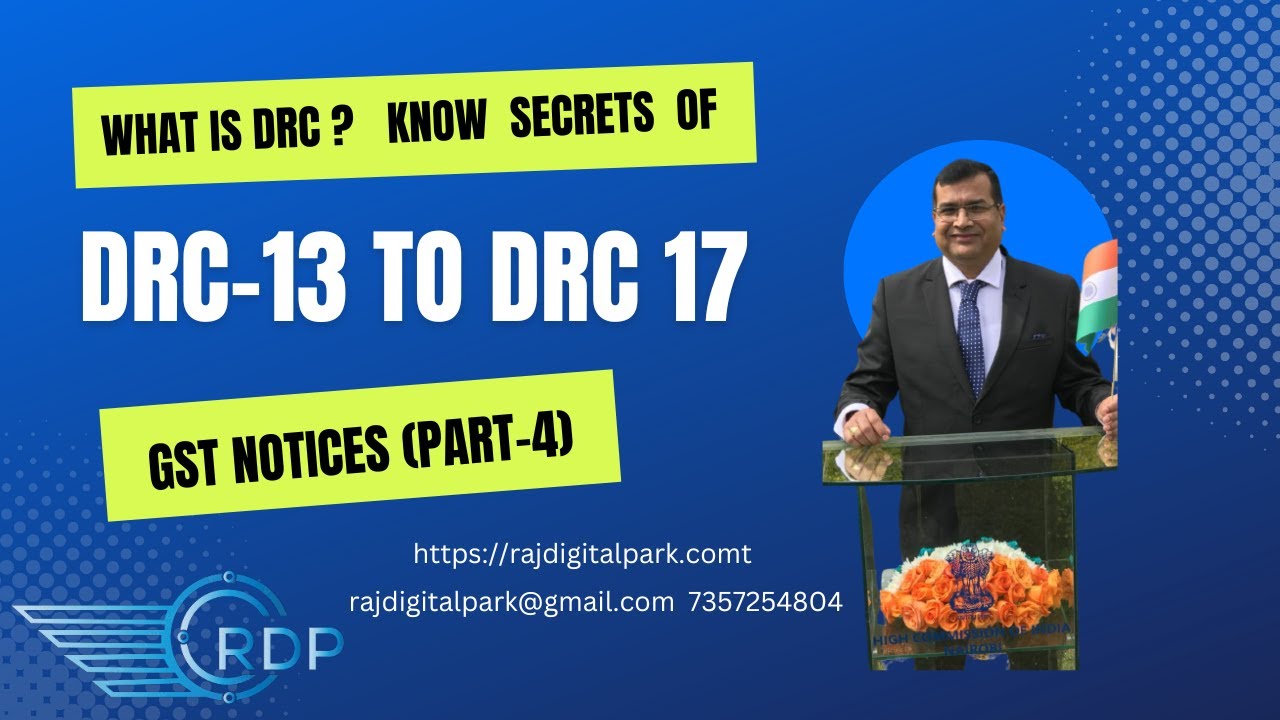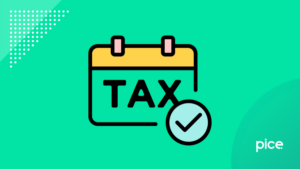What is DRC 13 in GST?
- 2 Jan 25
- 6 mins

What is DRC 13 in GST?
Key Takeaways
- DRC-13 notice provisionally attaches property or bank accounts to secure GST dues.
- Valid for one year, the notice applies during specific GST proceedings.
- Delivered via email, GSTN portal, post, or publicly affixed if necessary.
- Respond promptly with expert advice, evidence, and objections if warranted.
- Legal remedies include challenging the attachment through appeals or courts.
DRC-13 in GST is a notice served by the GST authorities towards a third person to recover the GST dues towards them. This notice is served under Section 79 (1)(c) of the CGST Act, 2017. Read this blog to get detailed information on this GST notice.
What is DRC-13 Notice?

A GST notice is a mode of one-way communication between the taxpayers and the GST authorities. If the GST authority thinks that it is necessary to provisionally attach any property belonging to the taxable persons, it can do so with the GST DRC-13 notice.
This attachment of property can be done during the pendency of any proceedings under Section 61, Section 63 Section 64, Section 67, Section 73, and Section 74. Here the purpose of this notice is to protect the interest of the Government revenue. Each provisional attachment shall stop being in effect after 1 year from the date of the order made under subsection (1).
Section 169 (1) of the CGST Act, 2017 states different modes of communication of the notices. What it means is that these notices can be provided via email address, through the GSTN portal, published in the local newspaper, registered post or speed post.
If there are no other options of communication, the GST notice has to be affixed at some prominent place of the taxpayer’s last known business address. The GST notice can be posted on the notice board of the concerned GST authority.
Legal Recourse and Proceedings
If you receive a GST DRC-13 notice, you should follow these steps:
- Review the notice: You should go through the DRC-13 notice properly and understand which properties or bank accounts have been provisionally attached.
- Seek professional advice: Upon receiving a GST DRC-13 notice, you should look for professional advice from a GST practitioner or tax consultant. They can explain to you what the notice’s implications are and help draw up a suitable legal response.
- Put together a response: The taxpayers should prepare relevant documents and evidence so it can be used to challenge the attachment if there are grounds to dispute it.
If you believe the provisional attachment to be unwarranted, you can respond to the notice with proper reasons and appeal to the commissioner to reassess it. Furthermore, you can approach the applicable judicial forum for relief in opposition to the provisional attachment order.
Penalties and Prosecution
The provisional attachment can result in major operational setbacks for the business because the bank accounts are frozen here. Since you will be unable to access your bank accounts, it can lead to cash flow issues and failure to meet financial obligations. Additionally, the attachment of property can disrupt your business’s daily operations.
Do’s and Don’ts on Receiving a GST DRC-13 Notice

There are some do’s and don’ts when you receive a DRC 13 notice such as:
Do’s
- You should understand the specifics of the provisional attachment and identify the assets that are affected.
- Gather all necessary documents and information you can use to support the dispute as opposed to the attachment.
- Take counsel from a GST practitioner or a legal expert to be aware of your options and put together a response.
- It is important to file your objections or your responses under the specified deadline after the issuance of the notice. Keep records of the GST DRC-13 notice and all documents that are related to it for further reference.
Don’ts
- You should not disregard the notice, as this will result in continued attachment. Moreover, legal actions may be pursued later on.
- Do not provide wrong information while responding to the notice. Always make sure to provide accurate and complete information.
- You must not delay responding to the notice, as your business operation can be disrupted for a long time.
- If you are unsure about the notice’s content or implications, consult a professional and do not ignore their advice.
Legal Remedy
If you believe the provisional attachment to be unjust, there are some legal remedies you can take, such as:
- You can file an objection with the commissioner and reply to the notice stating supportable reasons and proof for disputing the attachment.
- If you have valid reasons to believe the attachment is erroneous, you can request the higher authorities to reevaluate the attachment order.
- You can also challenge the provisional attachment order in the High Court or other applicable judicial forums.
Conclusion
The GST DRC-13 notice is an important document issued by the GST authorities to recover the GST dues towards taxable persons. If you receive this notice, you should properly review the notice and seek professional advice to effectively handle provisional attachments.
💡If you want to streamline your payment and make GST payments, consider using the PICE App. Explore the PICE App today and take your business to new heights.




















